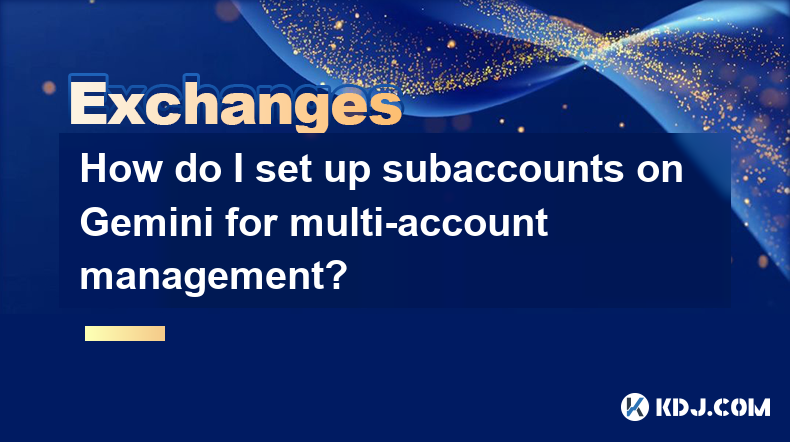-
 Bitcoin
Bitcoin $107,443.3008
-1.17% -
 Ethereum
Ethereum $2,494.2503
-0.63% -
 Tether USDt
Tether USDt $1.0003
0.00% -
 XRP
XRP $2.2496
2.23% -
 BNB
BNB $658.7569
0.63% -
 Solana
Solana $154.9826
1.94% -
 USDC
USDC $1.0000
0.01% -
 TRON
TRON $0.2799
1.07% -
 Dogecoin
Dogecoin $0.1659
-1.78% -
 Cardano
Cardano $0.5745
0.25% -
 Hyperliquid
Hyperliquid $39.7005
0.13% -
 Bitcoin Cash
Bitcoin Cash $519.5989
3.78% -
 Sui
Sui $2.7874
-2.40% -
 Chainlink
Chainlink $13.3762
-1.69% -
 UNUS SED LEO
UNUS SED LEO $9.0784
-0.64% -
 Avalanche
Avalanche $17.9846
-2.81% -
 Stellar
Stellar $0.2390
-0.06% -
 Toncoin
Toncoin $2.9028
0.25% -
 Shiba Inu
Shiba Inu $0.0...01147
-2.17% -
 Litecoin
Litecoin $86.6956
-1.27% -
 Hedera
Hedera $0.1508
-0.50% -
 Monero
Monero $322.6222
3.26% -
 Polkadot
Polkadot $3.4124
-2.99% -
 Dai
Dai $0.9999
0.00% -
 Bitget Token
Bitget Token $4.5434
-1.97% -
 Ethena USDe
Ethena USDe $1.0002
0.00% -
 Uniswap
Uniswap $7.1562
-2.61% -
 Aave
Aave $275.8830
-1.02% -
 Pepe
Pepe $0.0...09790
-4.04% -
 Pi
Pi $0.5018
-5.09%
How do I set up subaccounts on Gemini for multi-account management?
Subaccounts on Gemini let you manage multiple trading strategies and delegate tasks efficiently under one main account, enhancing your trading operations.
Apr 05, 2025 at 03:21 am

Setting up subaccounts on Gemini can be a powerful tool for managing multiple accounts efficiently. This feature allows users to segregate their trading activities, manage different portfolios, or handle different strategies under one main account. In this article, we will walk you through the detailed process of setting up subaccounts on Gemini, ensuring you can leverage this functionality to its fullest potential.
Understanding Subaccounts on Gemini
Before diving into the setup process, it's important to understand what subaccounts are and how they can benefit you. Subaccounts on Gemini are additional accounts linked to your main Gemini account. They allow you to manage different trading strategies, segregate funds for different purposes, or even delegate trading responsibilities to different team members without needing multiple separate accounts. This can streamline your trading operations and enhance your overall management capabilities.
Prerequisites for Setting Up Subaccounts
To set up subaccounts on Gemini, you need to meet certain prerequisites. Firstly, you must have a verified Gemini account. Verification involves submitting personal information and completing the necessary identity checks. Additionally, you need to ensure that your account is in good standing and that you have the necessary permissions to create subaccounts. If you are part of an organization, you might need to check with your account administrator for the required permissions.
Step-by-Step Guide to Setting Up Subaccounts
Here is a detailed guide on how to set up subaccounts on Gemini:
- Log into your Gemini account: Start by accessing your Gemini account using your credentials.
- Navigate to the Subaccounts section: Once logged in, go to the 'Settings' or 'Account' section of your dashboard. Look for an option labeled 'Subaccounts' or similar.
- Initiate the subaccount creation process: Click on the 'Create Subaccount' button. You will be prompted to enter details for the new subaccount, such as a name and any specific permissions you want to assign.
- Configure subaccount settings: You can set up different permissions for each subaccount. For example, you might want to limit trading capabilities or access to certain features. Make sure to configure these settings according to your needs.
- Review and confirm: After entering all the necessary information and configuring the settings, review your choices. Once satisfied, confirm the creation of the subaccount.
- Verify the subaccount: Depending on Gemini's policies, you might need to verify the subaccount through an email confirmation or other verification methods.
Managing and Using Subaccounts
Once your subaccounts are set up, you can start using them for your trading activities. Here are some tips on managing and using subaccounts effectively:
- Segregate your trading strategies: Use different subaccounts to manage different trading strategies. This can help you keep track of performance and make adjustments more easily.
- Delegate responsibilities: If you are part of a team, you can assign different subaccounts to different team members. This allows for better division of labor and accountability.
- Monitor subaccount activity: Regularly check the activity and performance of each subaccount. Gemini provides tools and reports that can help you monitor these activities effectively.
Security Considerations for Subaccounts
Security is paramount when managing multiple accounts. Here are some security considerations to keep in mind:
- Use strong, unique passwords: Ensure that each subaccount has a strong and unique password. Avoid reusing passwords across different accounts.
- Enable two-factor authentication (2FA): Gemini supports 2FA, which adds an extra layer of security. Make sure to enable this for all your subaccounts.
- Regularly review permissions: Periodically review the permissions assigned to each subaccount. Adjust them as necessary to ensure that only the required access is granted.
Troubleshooting Common Issues
While setting up and managing subaccounts is generally straightforward, you might encounter some common issues. Here are some troubleshooting tips:
- Verification issues: If you face issues with verifying a subaccount, ensure that you have provided all the required information correctly. Check your email for any verification links and follow the instructions provided.
- Permission errors: If you encounter permission errors, double-check the permissions assigned to the subaccount. Ensure that you have the necessary permissions to create and manage subaccounts.
- Technical glitches: If you experience technical issues, try clearing your browser cache or using a different browser. If the problem persists, contact Gemini's customer support for assistance.
Frequently Asked Questions
Q: Can I transfer funds between my main account and subaccounts on Gemini?
A: Yes, you can transfer funds between your main account and subaccounts. Gemini provides an easy-to-use interface for managing these transfers, allowing you to move funds as needed for your trading activities.
Q: Are there any fees associated with creating and managing subaccounts on Gemini?
A: Gemini does not charge any fees for creating and managing subaccounts. However, standard trading fees and withdrawal fees may apply to transactions conducted within the subaccounts.
Q: Can I set up subaccounts for different cryptocurrencies on Gemini?
A: Yes, you can set up subaccounts to manage different cryptocurrencies. Each subaccount can be configured to handle specific cryptocurrencies, allowing you to segregate your assets as needed.
Q: How many subaccounts can I create on Gemini?
A: The number of subaccounts you can create on Gemini may vary based on your account type and verification level. It's best to check Gemini's official documentation or contact their support for the most current information on subaccount limits.
Disclaimer:info@kdj.com
The information provided is not trading advice. kdj.com does not assume any responsibility for any investments made based on the information provided in this article. Cryptocurrencies are highly volatile and it is highly recommended that you invest with caution after thorough research!
If you believe that the content used on this website infringes your copyright, please contact us immediately (info@kdj.com) and we will delete it promptly.
- North Korea's Cyber Plot: Funding Weapons Development Through Virtual Heists
- 2025-07-01 10:30:12
- Undervalued Crypto Tokens: Compute Tokens Stealing the Show?
- 2025-07-01 10:50:12
- XRPL EVM Sidechain: Unleashing Smart Contracts and Cross-Chain DeFi on XRP
- 2025-07-01 10:30:12
- Archaeology Unearths Ancient Coin Moulds: A Glimpse into Indo-Greek Trade in Gujarat
- 2025-07-01 10:50:12
- MAGACOIN FINANCE: Altcoin Returns & the Early Adoption Advantage
- 2025-07-01 11:10:12
- Neo Pepe: Is This Presale the Crypto Opportunity You've Been Waiting For?
- 2025-07-01 11:10:12
Related knowledge

Binance spot market analysis: seize the best time to buy and sell
Jun 19,2025 at 04:56pm
Understanding the Binance Spot MarketThe Binance spot market is one of the most popular platforms for cryptocurrency trading globally. It allows users to trade digital assets at current market prices, making it essential for traders aiming to buy low and sell high. Unlike futures or margin trading, spot trading involves direct ownership of the asset aft...

Binance fund management secrets: reasonable allocation to increase income
Jun 22,2025 at 02:29pm
Understanding Binance Fund ManagementBinance fund management involves strategic allocation of your cryptocurrency assets to optimize returns while managing risk. The key to successful fund management lies in understanding how different investment options on the Binance platform can be utilized to create a diversified portfolio. This includes spot tradin...

Binance trading pair selection skills: find the best buying and selling combination
Jun 23,2025 at 02:49am
Understanding the Basics of Trading Pairs on BinanceBefore diving into trading pair selection skills, it's essential to understand what a trading pair is. On Binance, a trading pair refers to two cryptocurrencies that can be traded against each other. For example, BTC/USDT means Bitcoin is being traded against Tether. Each trading pair has its own liqui...

Binance new coin mining strategy: participate in Launchpool to earn income
Jun 23,2025 at 11:56am
What is Binance Launchpool and how does it work?Binance Launchpool is a feature introduced by the world’s largest cryptocurrency exchange, Binance, to allow users to earn new tokens through staking. This platform enables users to stake their existing cryptocurrencies (such as BNB, BUSD, or other supported assets) in exchange for newly launched tokens. T...

Binance financial management guide: ways to increase the value of idle assets
Jun 19,2025 at 11:22pm
Understanding Idle Assets in the Cryptocurrency SpaceIn the fast-paced world of cryptocurrency, idle assets refer to digital currencies that are not actively being used for trading, staking, or yield farming. Holding these funds in a wallet without utilizing them means missing out on potential growth opportunities. Binance, as one of the leading platfor...

Binance flash exchange function guide: quick exchange of digital currencies
Jun 23,2025 at 12:29pm
What is the Binance Flash Exchange Function?The Binance Flash Exchange function is a powerful tool designed to allow users to instantly swap between supported cryptocurrencies without the need for placing traditional buy/sell orders. This feature simplifies the trading process by offering a direct exchange mechanism, eliminating the requirement to conve...

Binance spot market analysis: seize the best time to buy and sell
Jun 19,2025 at 04:56pm
Understanding the Binance Spot MarketThe Binance spot market is one of the most popular platforms for cryptocurrency trading globally. It allows users to trade digital assets at current market prices, making it essential for traders aiming to buy low and sell high. Unlike futures or margin trading, spot trading involves direct ownership of the asset aft...

Binance fund management secrets: reasonable allocation to increase income
Jun 22,2025 at 02:29pm
Understanding Binance Fund ManagementBinance fund management involves strategic allocation of your cryptocurrency assets to optimize returns while managing risk. The key to successful fund management lies in understanding how different investment options on the Binance platform can be utilized to create a diversified portfolio. This includes spot tradin...

Binance trading pair selection skills: find the best buying and selling combination
Jun 23,2025 at 02:49am
Understanding the Basics of Trading Pairs on BinanceBefore diving into trading pair selection skills, it's essential to understand what a trading pair is. On Binance, a trading pair refers to two cryptocurrencies that can be traded against each other. For example, BTC/USDT means Bitcoin is being traded against Tether. Each trading pair has its own liqui...

Binance new coin mining strategy: participate in Launchpool to earn income
Jun 23,2025 at 11:56am
What is Binance Launchpool and how does it work?Binance Launchpool is a feature introduced by the world’s largest cryptocurrency exchange, Binance, to allow users to earn new tokens through staking. This platform enables users to stake their existing cryptocurrencies (such as BNB, BUSD, or other supported assets) in exchange for newly launched tokens. T...

Binance financial management guide: ways to increase the value of idle assets
Jun 19,2025 at 11:22pm
Understanding Idle Assets in the Cryptocurrency SpaceIn the fast-paced world of cryptocurrency, idle assets refer to digital currencies that are not actively being used for trading, staking, or yield farming. Holding these funds in a wallet without utilizing them means missing out on potential growth opportunities. Binance, as one of the leading platfor...

Binance flash exchange function guide: quick exchange of digital currencies
Jun 23,2025 at 12:29pm
What is the Binance Flash Exchange Function?The Binance Flash Exchange function is a powerful tool designed to allow users to instantly swap between supported cryptocurrencies without the need for placing traditional buy/sell orders. This feature simplifies the trading process by offering a direct exchange mechanism, eliminating the requirement to conve...
See all articles

























































































